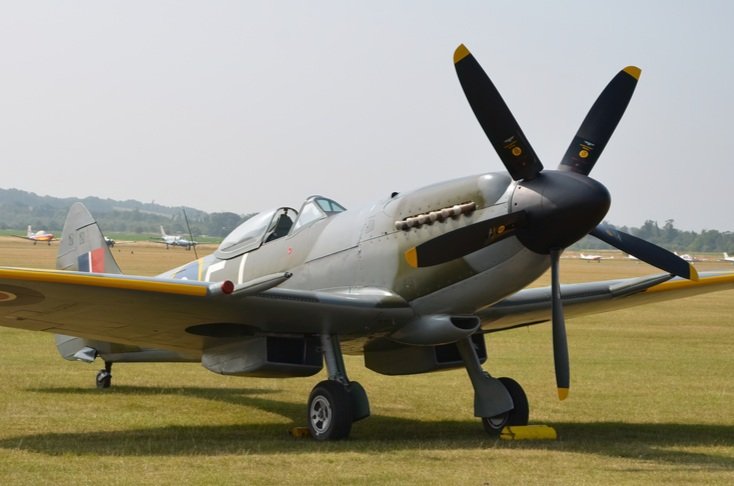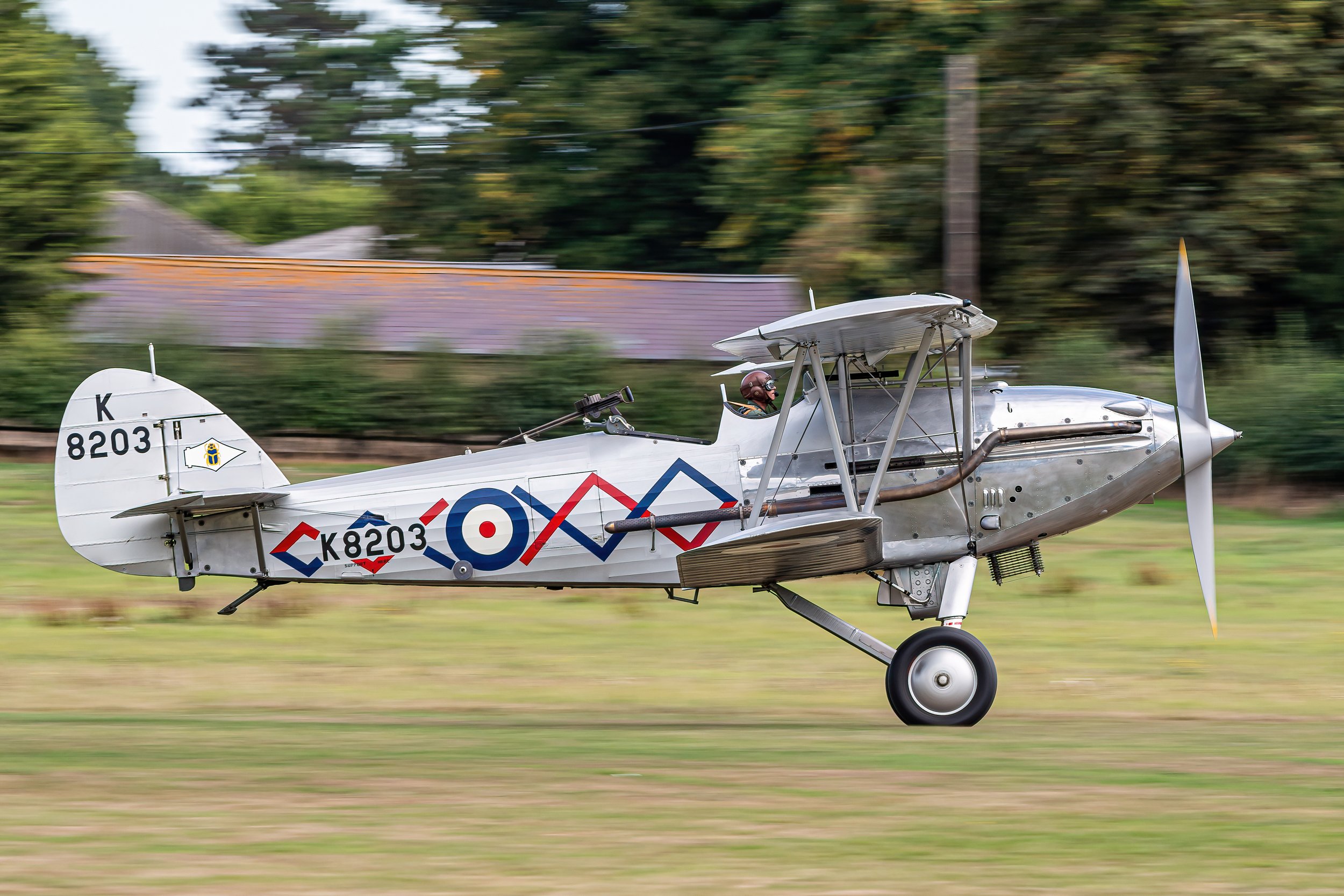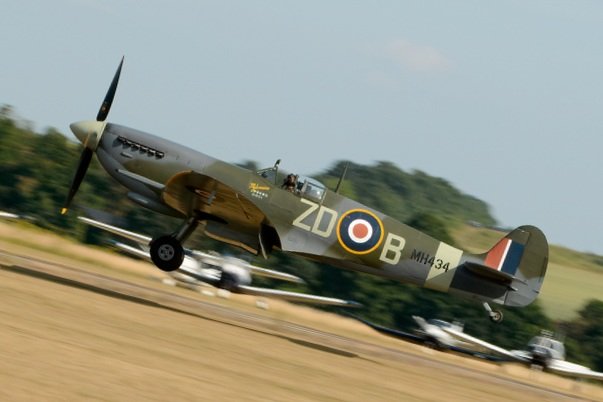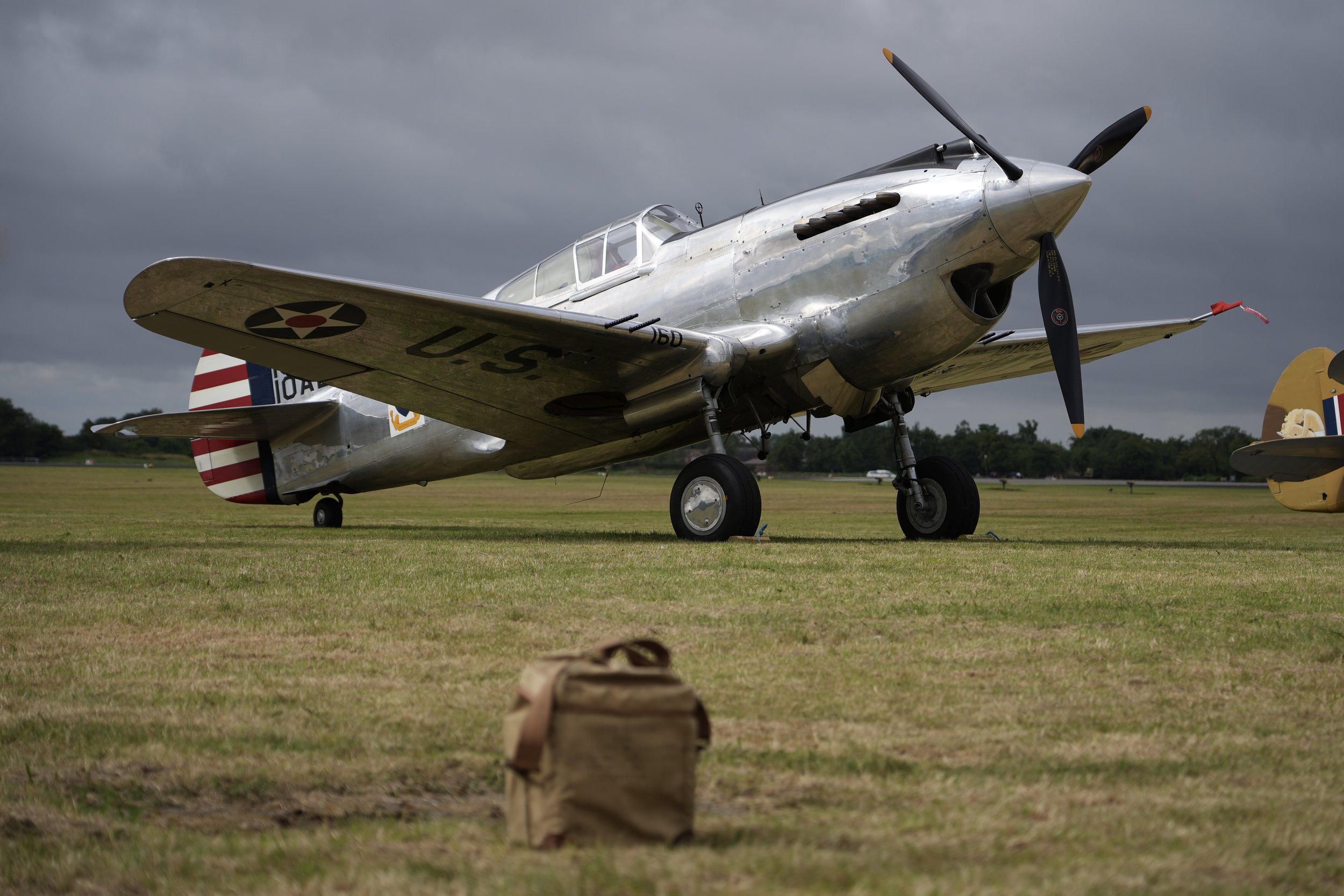Texan G-BJST
Year built
1953
Aircraft
T-6J Texan
Base
Duxford Airfield
Harvard G-BJST was built in 1953 by the Canadian Car and Foundry Company (C&CF) as a Harvard 4 and was taken on Strength with the United States Air Forces (USAF) with serial number 51-17110 (S/n issued for administrative purpose only – did not serve with the USAF).
It was then taken on strength with the Aeronautica Militare Italiana (Italian Air Force) with serial number MM53795 and transferred to SCIV / IA Scuola Centrale di Volo (Central School of Flight Instructors) where it received the SC-66 markings.
After its military career, the Texan was sold to Victor Samuel Eric Norman where it was painted as a Zero for the film Empire of the Sun and received a civilian registration G-BJST it has to this day.
The Texan flew with a number of different owners and in 2005 received the new Royal Air Force colour scheme with KF729 markings of the aircraft HRH Prince Philip flew during his advanced training. His Harvard at that time bore the five stars denoting his rank of Marshal of the Royal Air Force.
In 2015 the Texan was repainted again this time as the AJ841 “Wacky Wabbit”.
| Back to Top |
North American T-6J Texan
The North American Aviation T-6 Texan is an American single-engined advanced trainer aircraft used to train pilots of the United States Army Air Forces (USAAF), United States Navy, Royal Air Force, Royal Canadian Air Force and other air forces of the British Commonwealth during World War II and into the 1970s. Designed by North American Aviation, the T-6 is known by a variety of designations depending on the model and operating air force. The United States Army Air Corps (USAAC) and USAAF designated it as the AT-6, the United States Navy the SNJ, and British Commonwealth air forces the Harvard, the name by which it is best known outside the US. Starting in 1948, the new United States Air Force (USAF) designated it the T-6, with the USN following in 1962. It remains a popular warbird used for airshow demonstrations and static displays. It has also been used many times to simulate various historical aircraft, including the Japanese Mitsubishi A6M Zero. A total of 15,495 T-6s of all variants were built.
| Back to Top |
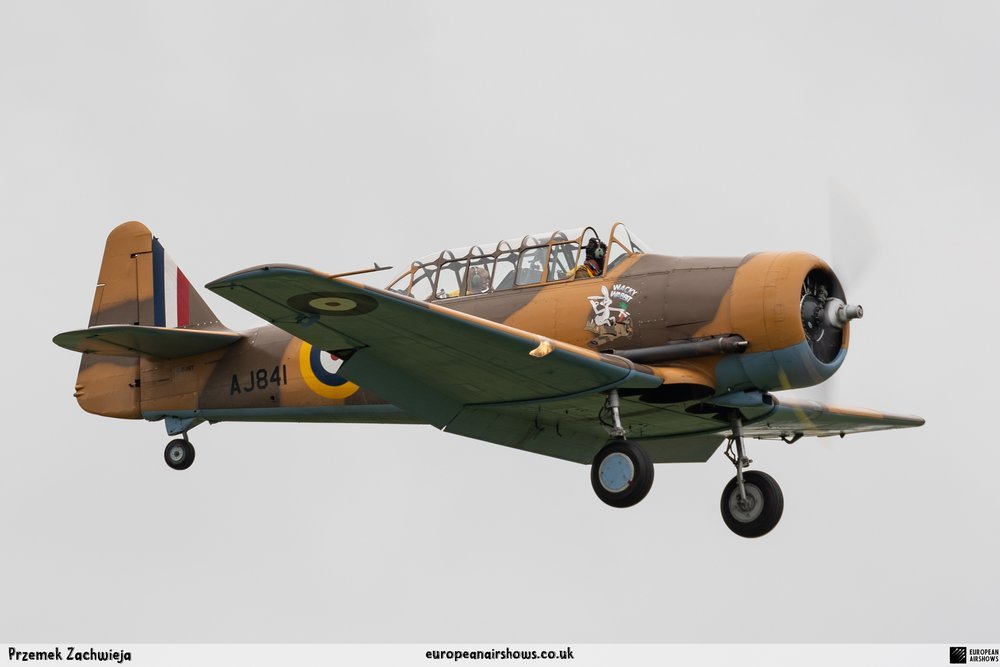
| Back to Top |






















